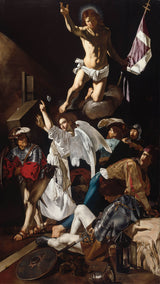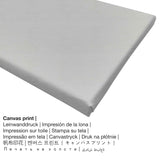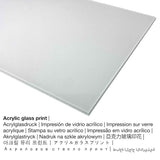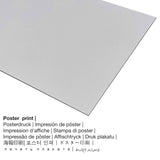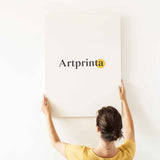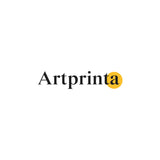Francesco Buoneri, 1620 - Mbilite n'ọnwụ - mbipụta nka mara mma
Ụtụ gụnyere. Mbupu gbakọrọ na ndenye ọpụpụ.
Nchịkọta ngwaahịa
na 1620 Francesco Buoneri kere ihe a nka ochie artpiece. The original had the size of 339,1 × 199,5 cm (133 1/2 × 78 1/2 na) e were kwa ihe-ọcha tee ya mmanụ na kwaaji. Ugbu a, artpiece dị n'ime Ụlọ ọrụ Art nke Chicago collection, which is one of the world’s great art museums, housing a collection that spans centuries and the globe. With courtesy of: Art Institute Chicago (ọha na eze). The creditline of the artwork is: Charles H. and Mary F. S. Worcester Collection. In addition to that, the alignment of the digital reproduction is Eserese ya na oke nke 9: 16, nke pụtara na ogologo bụ 45% mkpụmkpụ karịa obosara. The painter Francesco Buoneri was a European artist from Italy, whose art style can primarily be attributed to Baroque. The European artist was born in 1588 and deceased at the age of 32 n'afọ 1620.
Additional information on the original artwork by Art Institute Chicago (© - Art Institute Chicago - Ụlọ ọrụ Art Chicago)
The Resurrection, the only documented painting by Francesco Buoneri, was commissioned in 1619 by the Tuscan ambassador to Rome, Piero Guicciardini, as one of several altarpieces for his family’s chapel in Florence. In a turn of events that was not uncommon in the rapidly evolving artistic scene of early-17th-century Rome, the painting was rejected by Guicciardini and sold to another collector. The Resurrection exaggerates the bold contrast of light and dark and the realistic treatment of sacred figures that Caravaggio had introduced into Roman painting. Buoneri was apparently one of Caravaggio’s closest followers. He may have been the "boy Francesco" who assisted the painter during his last years in Rome, a personal connection suggested by his contemporary nickname, Cecco (for Francesco) del Caravaggio.
Data nka ahaziri
| Aha ọrụ nka: | "Mbilite n'ọnwụ" |
| Nhazi: | sere |
| Okwu nche anwụ: | nka ochie |
| Nhazi oge: | 17th narị afọ |
| Afọ nka: | 1620 |
| Ogologo afọ nka nka: | gbara afọ 400 |
| Ọkara nke ihe osise izizi: | mmanụ na kwaaji |
| Akụkụ nke ihe osise izizi: | 339,1 × 199,5 cm (133 1/2 × 78 1/2 na) |
| Egosiputara na: | Ụlọ ọrụ Art Chicago |
| Ebe ngosi nka: | Chicago, Illinois, Njikota Obodo Amerika |
| Dị n'okpuru: | Ụlọ ọrụ Art Chicago |
| Ụdị nka nka: | ngalaba ọha |
| Site n'aka: | Ụlọ ọrụ Art Chicago |
| Ebe E Si Nweta: | Charles H. na Mary FS Worcester mkpokọta |
Tebụl nchịkọta ihe nkiri
| aha: | Francesco Buoneri |
| okike nke onye nka: | nwoke |
| Obodo onye nka: | Italian |
| Ọrụ: | onye na-ese ihe |
| Mba onye si: | Italy |
| Nhazi nke onye nka: | nna ukwu ochie |
| Ụdị nka: | Baroque |
| Akwụsị: | 32 afọ |
| Afọ ọmụmụ: | 1588 |
| Nwuru: | 1620 |
Nweta nhọrọ akụrụngwa ọkacha mmasị gị
Maka ngwaahịa ọ bụla anyị na-enye ihe dị iche iche na nha. N'ihi ya, anyị na-enye gị ohere ịhọrọ n'ime nhọrọ ndị a:
- Mbipụta aluminom (aluminium dibbond): An Aluminium Dibond print is a material with an impressive depth. For your Direct Print On Aluminum Dibond, we print your favorite artpiece onto the aluminium surface. The bright components of the original artpiece shine with a silk gloss, however without glare. The colors are luminous, fine details of the print appear clear and crisp, and there’s a matte appearance you can literally feel.
- Mbipụta iko acrylic (nke nwere ezigbo mkpuchi iko n'elu): An print on acrylic glass, often labelled as a print on plexiglass, will change your favorite original into stunning wall décor. Your favorite work of art is manufactured with state-of-the-art UV direct printing machines. With a glossy acrylic glass fine art print contrasts and granular details become more visible due to the delicate gradation. The plexiglass protects your selected fine art print against light and heat for many more years.
- Akwụkwọ mmado ebipụtara (akwa akwa akwa): The poster print is a UV printed canvas with a slightly roughened finish on the surface. It is suited for placing the art copy using a customized frame. Please note, that depending on the absolute size of the canvas poster print we add a white margin 2-6cm around the print in order to facilitate the framing with your custom frame.
- Kwaaji: The UV printed canvas material applied on a wood frame. It generates the distinctive effect of three dimensionality. Further, a canvas print creates a lovely and enjoyable feeling. Hanging a canvas print: A canvas print has the great advantage of being relatively low in weight, meaning that it is quite simple to hang up the Canvas print without additional wall-mounts. A canvas print is suitable for all types of walls.
Banyere edemede a
| Nkewa bipụta: | nka nka |
| Usoro mmeputakwa: | dijitalụ mmeputakwa |
| Usoro mmepụta: | mbipụta dijitalụ |
| Mmalite nke ngwaahịa a: | emere na Germany |
| Ụdị ngwaahịa: | na mmepụta ihe |
| Eji ngwaahịa a chọrọ: | ụlọ mmepụta ihe nka, ihe ndozi mgbidi |
| Nhazi nka nka: | usoro eserese |
| Oke akụkụ onyonyo: | ogologo: obosara 9:16 |
| Ihe: | ogologo bụ 45% mkpụmkpụ karịa obosara |
| Akụrụngwa dị: | ígwè ebipụta (aluminium dibond), acrylic glass print (nwere ezigbo mkpuchi iko), mbipụta akwa akwa, mbipụta akwụkwọ mmado (akwụkwọ kwaaji) |
| Nhọrọ nha nke akwa akwa n'elu etiti ihe na-agbatị (mbipụta kwaaji): | 50x90cm - 20x35", 100x180cm - 39x71" |
| Mpempe iko acrylic (nwere ezigbo mkpuchi iko) nha dị iche iche: | 50x90cm - 20x35", 100x180cm - 39x71" |
| Nhọrọ nke mbipụta akwụkwọ mmado (akwụkwọ kwaaji): | 50x90cm - 20x35" |
| Mbipụta aluminom (aluminium dibond ihe) dị iche iche: | 50x90cm - 20x35" |
| Nhazi mbipụta nka: | biko mara na mmeputakwa a enweghi etiti |
Ederede iwu dị mkpa: We do whatever we can in order to describe our products as exact as possible and to demonstrate them visually. However, the tone of the printed materials and the print result can diverge somehwat from the representation on the device's screen. Depending on your settings of your screen and the quality of the surface, not all color pigments are printed as exactly as the digital version on this website. Since the art reproductions are processed and printed manually, there may as well be minor discrepancies in the exact position and the size of the motif.
Ederede a bụ ikike ọgụgụ isi ma chekwaa ya site na nwebisiinka © - www.artprinta.com (Artprinta)

